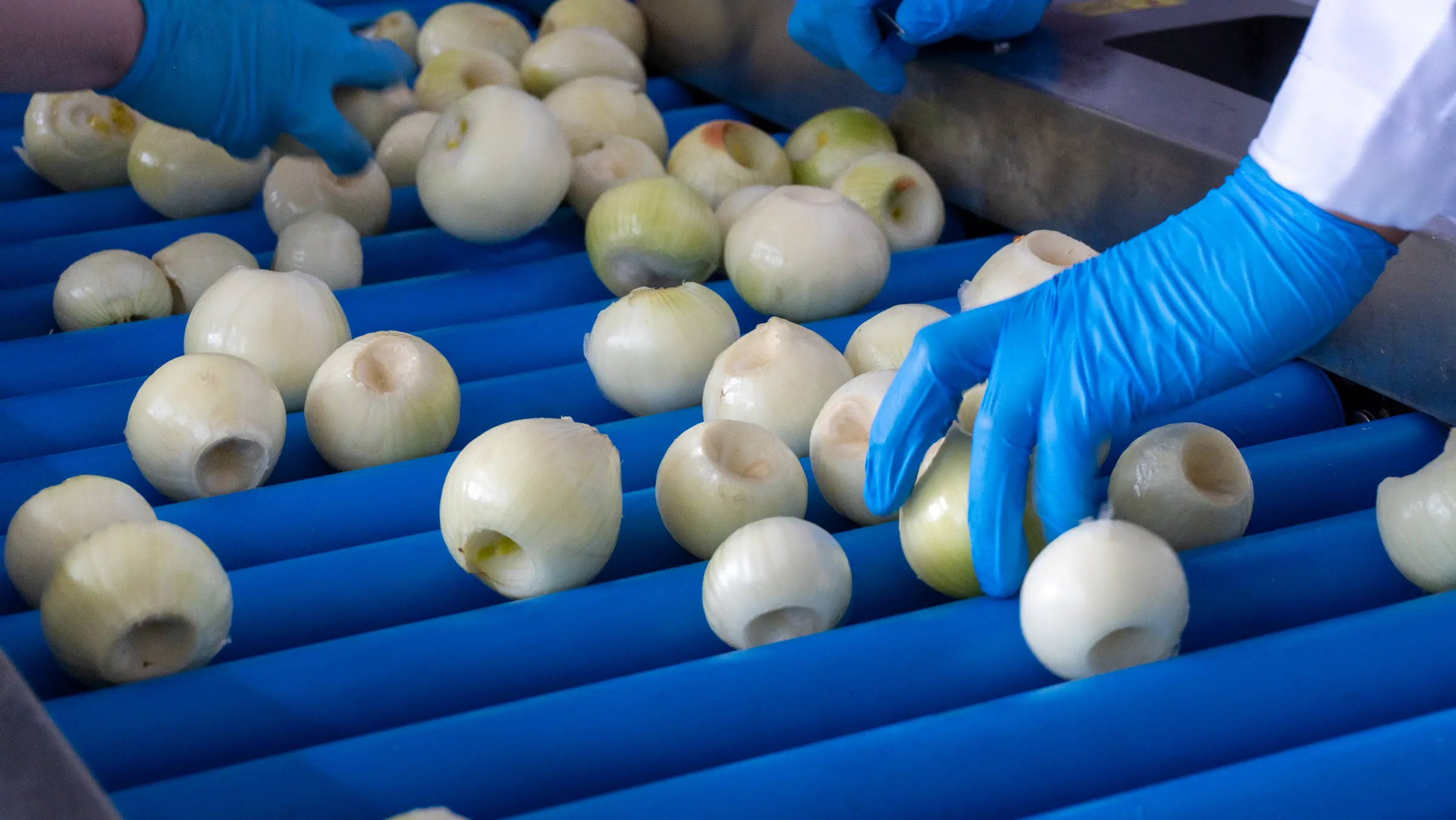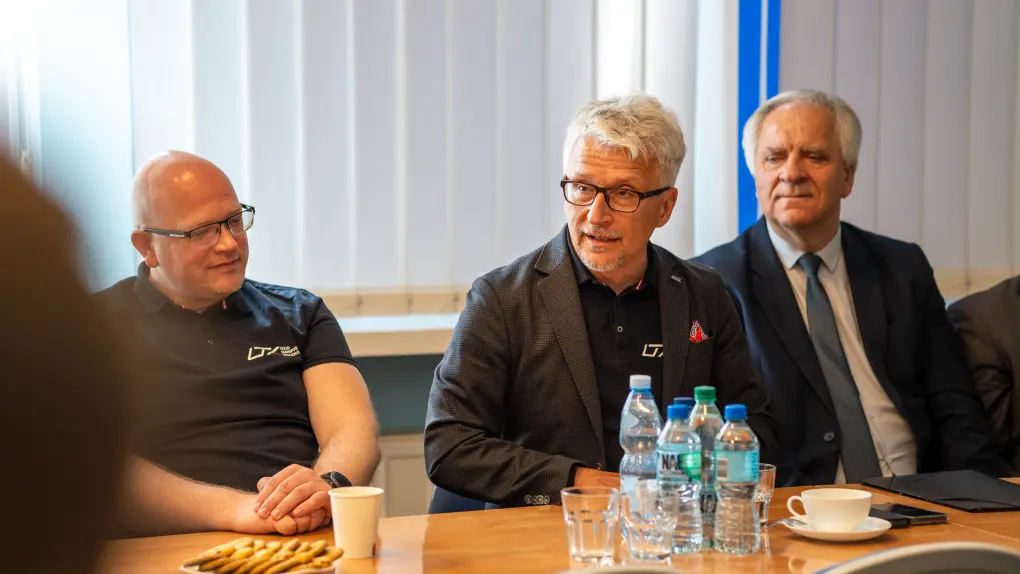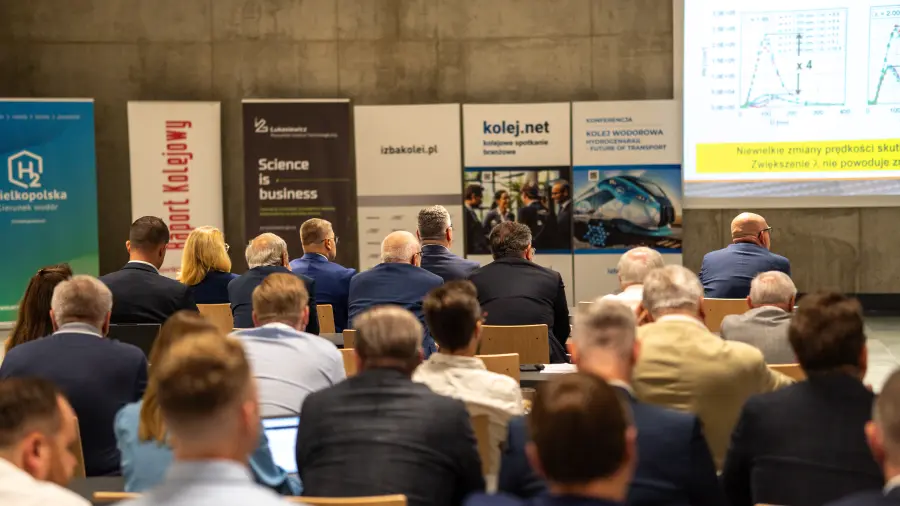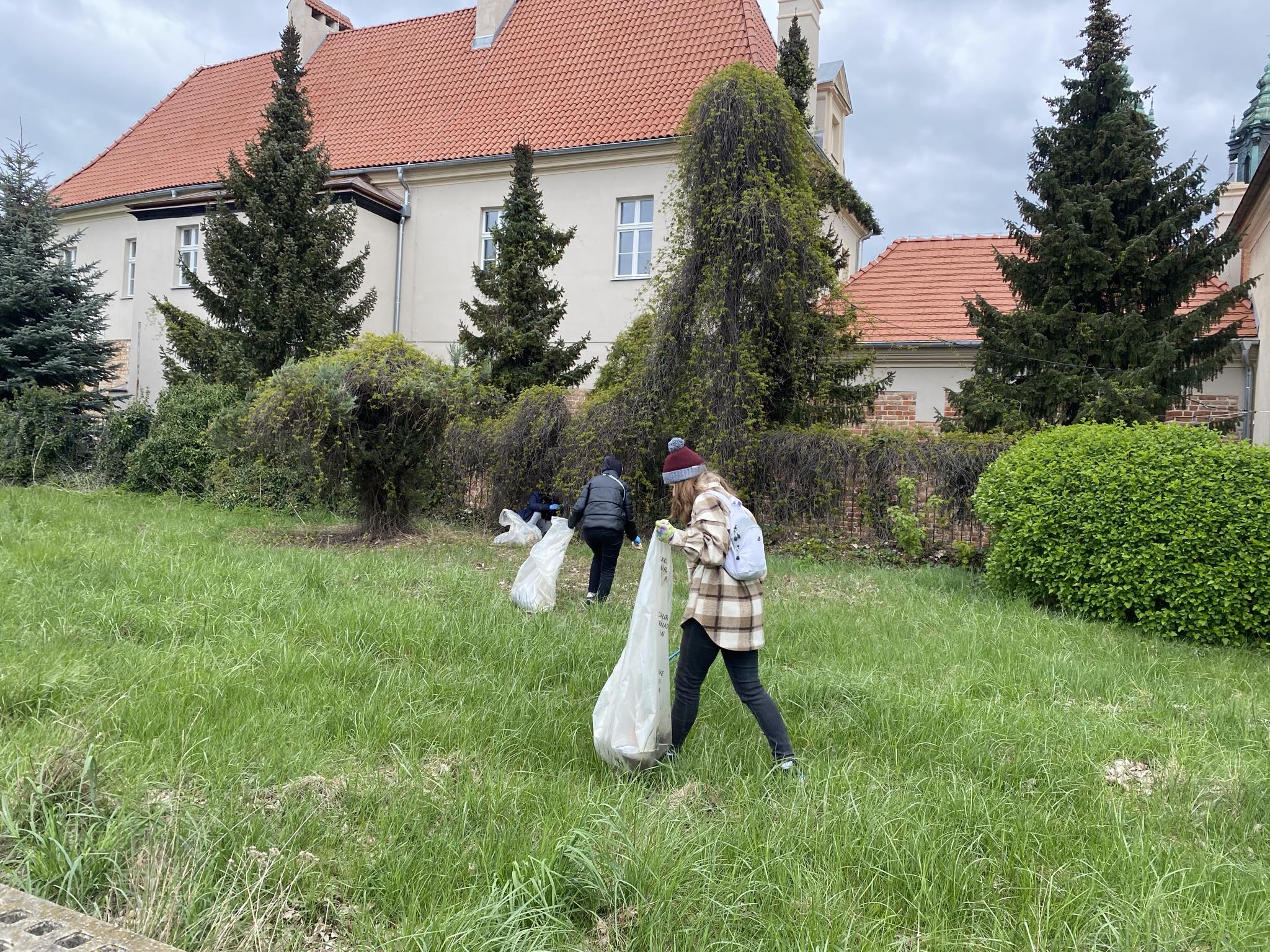Innovative line for peeling onions

Peels the onion skin and cuts off the tips. Leaves behind less waste than other machines on the market. It can be used in both agricultural and food processing industries. This is what the onion peeling line created at Łukasiewicz – Poznań Institute of Technology is like.
It consists of two parts that can operate as separate machines. The first peels off the yellow scales, while the second cuts off the chives and root. As a result, the onion is ready for further processing – cutting or slicing.
How does it work?
The vegetables do not need to be sorted beforehand. They can be between 45 and 110 mm in size. They are loaded in bulk into the machine which positions them in the appropriate places. The scales are cut at first and then blown away. The peeled onions move towards the second part of the machine. Here, workers position them in special slots in such a way that the chives and root form a vertical axis. The onions enter the module, which precisely cuts off the root and chives so that they fall out completely clean onto the inspection table. In the next step, the workers check that all vegetables have been well peeled and cut.
Results
A minimum of four workers are needed to operate the line, most for positioning the peeled vegetable in the up and down position and then for cleaning. The number of people and the speed at which they work determines the capacity of the machine. This ranges from 10 800 to 16 200 onions per hour. If the vegetables are small (75g), this means up to 1,215 kg of cleaned onions per hour, if they are larger (300g) – as much as 4,860 kg.
– The big advantage of this machine is the low weight loss of the onions, explains Agata Bieńczak, PhD, area leader for food technology at Łukasiewicz – Poznań Institute of Technology, who is the project manager. – Within the NCBR funded project, we have developed a technology for cutting the root and chive in the shape of a cone, regardless of the shape of the onion. As a result, we were able to reduce post-production waste from 50 percent to even less than 10 percent, depending on the onion, she adds.
The line is currently being tested at a food company. Ultimately, it will appear on the market and Forvite company will be responsible for its production.
– Our device responds to the needs of companies that process onions, says Agata Bieńczak, PhD. – It consists of two main modules. The first allows for peeling the onion from the dry (yellow) scales, and the second for removing the chives and root. This solution makes it possible for entrepreneurs to purchase only one module. The entire line, however, will allow greater use of the raw material and reduce the operating costs of the onion peeling process. I would also like to add that we have the possibility to design and manufacture a device with a higher capacity, which will be achieved by increasing the number of processing lines, says Agata Bieńczak, PhD.
FIND OUT MORE

12 June 2024
President of the Office of Rail Transport (UTK) with a visit at Lukasiewicz – Poznan Institute of Technology

21 June 2024
Hydrogen as the future of rail? 4th edition of the conference „HYDROGEN RAIL” – HYDROGEN4RAIL – FUTURE OF TRANSPORT

8 May 2024
Łukasiewicz – PIT at H2 Poland

24 April 2024
